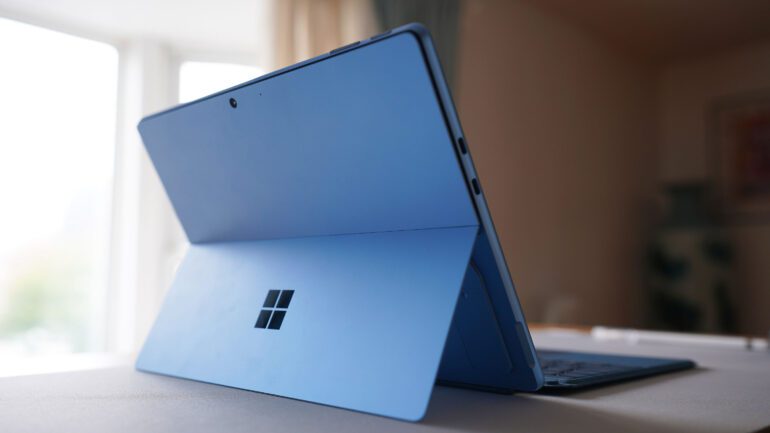TL;DR:
- Microsoft quietly raises minimum RAM requirement for AI PCs to 16GB.
- 40 TOPS of compute power mandated for new Windows AI PCs.
- TrendForce confirms these changes, anticipating a shift in industry standards.
- Potential impact on memory manufacturers and industry pricing.
- Current PC processors integrate NPUs to meet compute requirements.
- Intel’s Lunar Lake processors are expected to address the performance gap.
- Competitors like AMD and Qualcomm are not far behind.
- Excitement builds around the upcoming wave of AI PCs.
Main AI News:
In a surprising move, Microsoft is quietly reshaping the landscape of AI-powered PCs, setting new minimum specification levels that have yet to be officially announced. While these changes haven’t been widely publicized, inside sources have confirmed that Microsoft is raising the bar when it comes to minimum RAM configuration for AI PCs. TrendForce, a respected industry source, corroborates this information, stating that 16GB of RAM will soon become the standard configuration for Windows AI PCs. Additionally, both our sources and TrendForce agree that new Windows PCs will need a minimum of 40 TOPS (Trillion Operations Per Second) of compute power to earn the coveted AI PC label.
TrendForce stated in a recent press release about Microsoft Copilot, “Microsoft has set the baseline for DRAM in AI PCs at 16GB.” This strategic move by Microsoft is expected to drive an increase in the minimum memory capacity for new PCs, which is a welcome change for users, especially those purchasing laptops with soldered RAM that cannot be upgraded. With this shift, identifying memory-starved systems will become a thing of the past; consumers can simply look for AI PCs.
While this development may raise concerns for memory manufacturers, it is likely to be a boon for the industry. In the past year, some major players intentionally slowed down production to control supplies and improve pricing, which adversely affected revenue generation for companies like Samsung and SK hynix in 2023. However, the impact was partly self-inflicted.
As previously mentioned, the changes in PC system requirements extend beyond memory and encompass a more comprehensive transformation. Ensuring that a new PC runs Microsoft Copilot AI assistance smoothly and responsively hinges on sufficient local acceleration. Microsoft HQ has set a threshold of 40 TOPS of computational power for this purpose. This can be achieved with a discrete GPU, but most PC processors now integrate efficient NPUs (Neural Processing Units) capable of meeting or surpassing this compute performance target.
There is, however, a notable exception. Intel’s current Meteor Lake chips, when combining CPU, GPU, and NPU power, max out at 34 TOPS. TrendForce speculates that Intel’s upcoming Lunar Lake processors will address this performance gap, aiming to provide the necessary baseline for AI PCs. Intel itself has announced that Lunar Lake will deliver three times the AI performance of its predecessor, Meteor Lake.
On the other hand, competitors like AMD and Qualcomm are not far behind. The AMD Ryzen 8000 series (Strix Point) is expected to achieve 45 TOPS, while Qualcomm’s Snapdragon X Elite platform is also projected to offer a similar 45 TOPS performance. It will be interesting to see how Arm architecture processors from Qualcomm stack up in terms of other performance metrics.
The impending wave of AI PCs has generated substantial excitement in the industry, triggering a hardware refresh cycle. When the Windows Copilot key was first revealed, questions arose about the minimum requirements for devices to support it. Surprisingly, even entry-level modern PCs without onboard NPUs were given the green light to integrate this key. However, the speculation continues, and it’s possible that more stringent AI PC labeling and minimum specifications will be introduced alongside Windows 12, expected in the summer. For now, it’s clear that AI-ready PCs will need at least 16GB of RAM and a processor capable of achieving a minimum of 40 TOPS of AI compute power.
Conclusion:
Microsoft’s new minimum specs for AI-ready PCs signify a significant shift in the market. With 16GB of RAM becoming the standard and a minimum 40 TOPS of compute power required, consumers can expect more powerful AI PCs. This move may boost memory sales but presents challenges for manufacturers. Intel’s Lunar Lake processors aim to bridge the performance gap, while competitors like AMD and Qualcomm remain competitive. The industry anticipates a hardware refresh cycle, and the introduction of Windows 12 may bring even more stringent AI PC labeling and requirements, shaping the market’s future.

